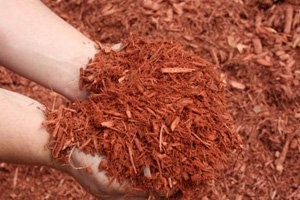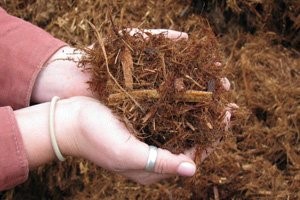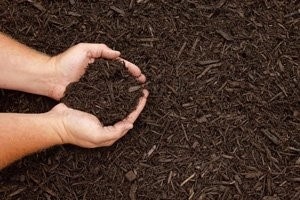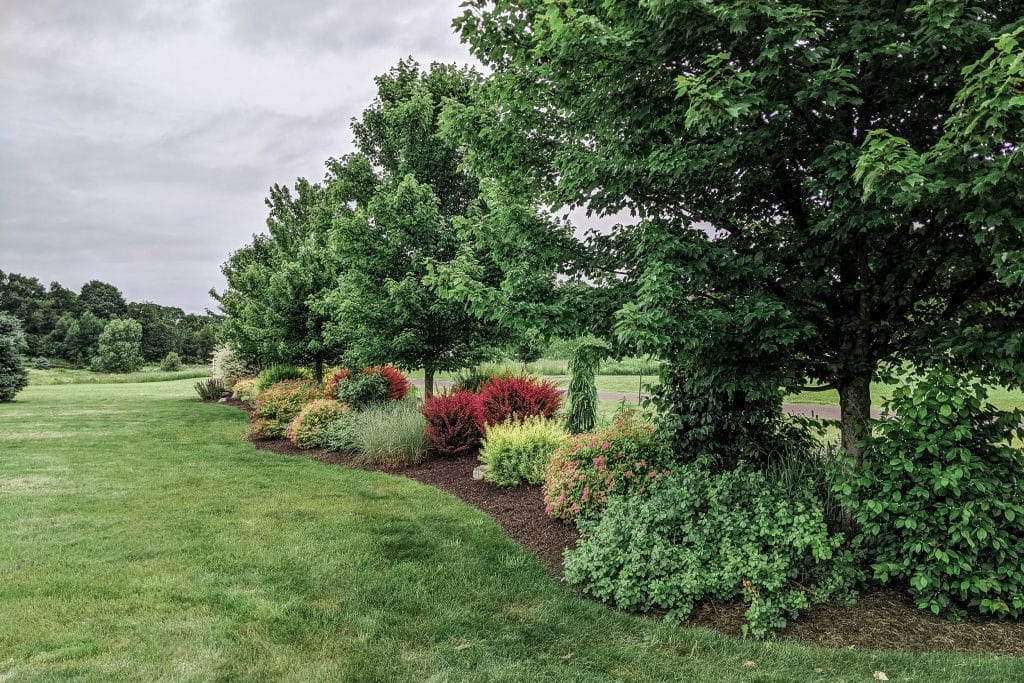When asking yourself if you should be mulching or not, the answer is always yes! The next questions is then how much and how often to mulch? Mulching too much, not enough or not with the right kind can be detrimental to your plants, so lets find out more!
SOME OF THE MAIN REASONS TO MULCH:
- Retain water in the root area.
- Cooling of the root area.
- Nutritional break-down.
- Insect, pest and weed suppression.
- Aesthetics
HOW MUCH TO MULCH:
Our general rule of thumb follows the Cornell Recommended Guidelines for mulching. First it is important to weed and clear out the desired area to be mulched. Then apply about 3-4 inches deep of mulch in a circular format around the base of the plant or tree. Finally, you want to separate the mulch slightly away from the base of the plant and create a small circular depression there.
After mulching it is a good idea to rake up and turn over that mulch around the same time next year, or before applying a new layer of mulch. Occasionally over time mulch can become hydrophobic, which means it becomes heavy and creates a barrier, not allowing rain water into the ground. So next year when you go to put another layer of mulch in that area it is a good idea to rake up and turn over the existing mulch first, this will help crack open its “skin” and allow rainwater to flow through. Some years you may not need to add as much mulch, just a light covering of an inch or two may be all you need to achieve the ideal depth of around 3-4 inches.
WHEN TO MULCH? There isn’t really a bad time to mulch:
Spring – this is the most common time to mulch, winter is over, and you are getting your garden ready and clearing remaining debris from last year, it just makes sense to mulch now.
Summer – mulching in the summer is totally fine too, as long as you are not applying “hot” mulch. A light watering is also recommended when mulching in the summer.
Fall – this can be helpful in putting your plant beds to rest for the winter season.
New Plantings – whenever you plant something new it is always a good idea to put a layer of mulch around the base to help retain the moisture in the ground.
DIFFERENT TYPES OF MULCH:
Ground Wood Colored Mulch isn’t necessarily the most beneficial type of mulch. It is made from ground up wood byproducts which doesn’t give you the full benefits of mulch that you need.
Arbor Tree Chipping Mulch is not always recommended either because the nitrogen cycle has not been completed. Because of this sometimes it can do more harm than good by pulling the nitrogen out of your plants. When this happens, the leaves can turn yellow or light green, this is called chlorosis.
Hardwood Ground Mulch is the most beneficial to landscape as it has been decomposing for some time and there is a nitrogen cycle that is returning the nutrients back to the soil.

Ground Wood Colored Mulch

Arbor Tree Chippings Mulch

Hardwood Ground Mulch





